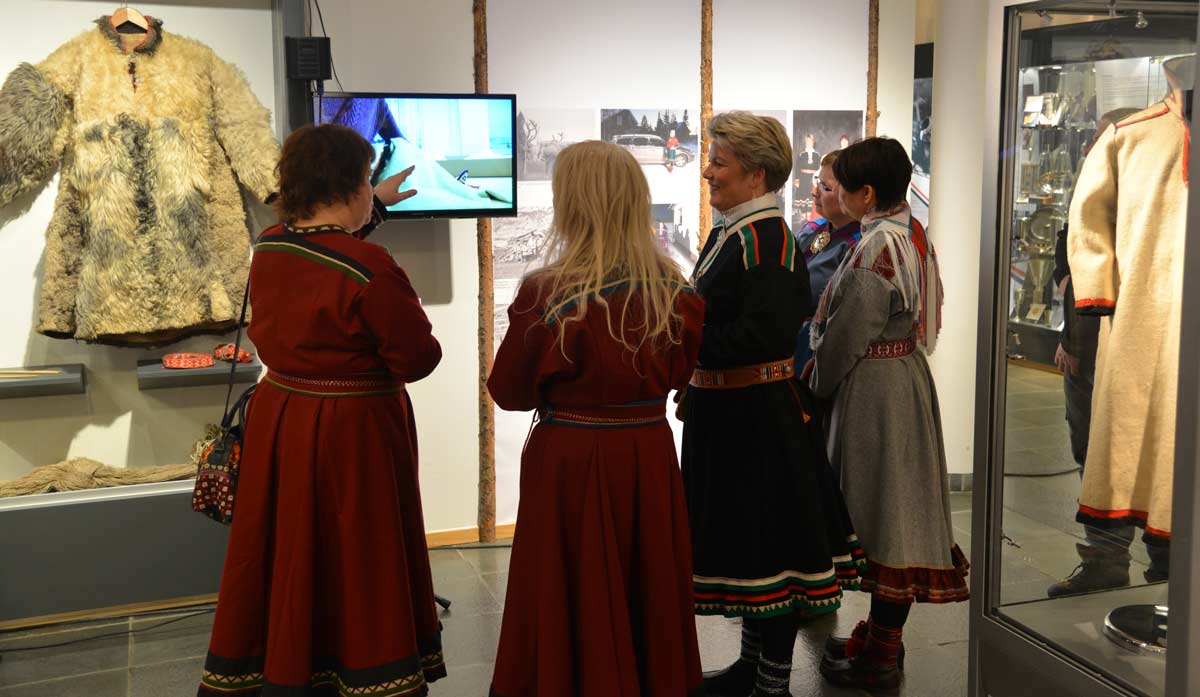Research project rediscovered Sea Sami identity in Altafjord
In the heart of Altafjord, a research project has brought a forgotten cultural heritage to life. The project "Restoration of Sami cultural heritage – what happens locally?" has given the local community a new understanding of its own history and identity.

The background for the research project was an agreement entered into in 2012, where the Norwegian Museum of Cultural History and the Museum of Cultural History were to return half of their Sami collections to the six Sami museums that are now under the administration of the Sami Parliament.
Alta Museum, which is not a specific Sami museum, but under the Ministry of Culture, was not directly involved in this process.
"As our coastal areas, including the Altafjord, were hit hard by the Norwegianisation policy, this was something that was still relevant to us. We see the consequences of this to this day. Among the objects that were to be returned, there were several that had been collected from Altafjord and the neighbouring municipalities, explains Eva Dagny Johansen, social anthropologist, museologist and project manager for "Restoration of Sami cultural heritage – what happens locally?".
The project has received NOK 1.6 million from the Research Council of Norway's Public Sector PhD scheme.

Collaboration and knowledge exchange
Johansen talks about good cooperation and useful knowledge exchange. Local resource persons, researchers, artists and museum employees worked closely together to select and interpret the objects to be returned. Through conversations and discussions, old photographs and objects were put together to gain a richer understanding of Sea Sami culture.
"It was exciting to see how the local knowledge and the old photographs shed new light on the objects. Together, we could tell a richer and more nuanced story about Sea Sami culture in the Altafjord," she says.
Objects with deep meaning
The items that were returned included clothing, jewellery, utensils, and everyday items. Some were well-known, while others, like a mysterious leather horn, required thorough research to understand their significance. Johansen says that local residents contributed both knowledge and objects that ensured a living exhibition of the Sea Sami cultural heritage.
"Preserving cultural heritage is an important part of the work of recognising and understanding culture and cultural differences. Museums play a central role in this work, not only by preserving artefacts but also by creating spaces for truth and reconciliation. When we collect these specific objects, they tell us much more than a picture in a digital archive can," says Johansen.
Strengthening local identity
The project has not only enriched the museum's collections, but also given the local community a new platform to tell their story. Johansen explains how the museum can play an important role in lifting local voices and knowledge into the public debate. By creating trust and collaboration, the museum helps to highlight knowledge that is otherwise overlooked.
"The project is important because through it we can show how we as a social institution can safeguard and highlight local knowledge and culture. By working closely with the local community and continuously safeguarding their perspectives, we build trust and ensure that the story and knowledge are shared. The museum serves as an arena where their voices are heard in larger contexts and in the public debate, so that they can influence decisions that affect them," says Johansen.
The importance of the project and the PhD candidate
Museum Director at Alta Museum, Jan S. Dølør, emphasises the importance the project has had for the museum, especially in terms of strengthening their research expertise.
"Having a PhD candidate like Johansen has given us a completely different platform, both internally and externally, to continue working on research," he says.
He highlights how the project has opened doors for collaboration with universities and other academic communities, and how it has contributed to the development of research-based knowledge that is relevant to the museum's activities.
A lasting legacy
The project has created a lasting legacy in the Altafjord. A local duodji group meets regularly at the museum to practice traditional crafts, and there are plans to create an exhibition of their work. Johansen envisions that the museum can continue to be an arena for highlighting local voices and knowledge, and thus also contribute to a fairer and more inclusive social debate.
She also emphasises the importance of the Research Council's funding to be able to carry out the project.
"The freedom to choose and immerse oneself in this topic was crucial to achieving the results. The project has provided new knowledge about the museum's collections, changed categorisations and led to Sea Sami cultural heritage now being part of the museum's permanent exhibition," she concludes.
Support for the project comes from the Research Council's Public Sector PhD scheme. The project period was from 2016 to 2021.
Messages at time of print 24 April 2025, 09:03 CEST